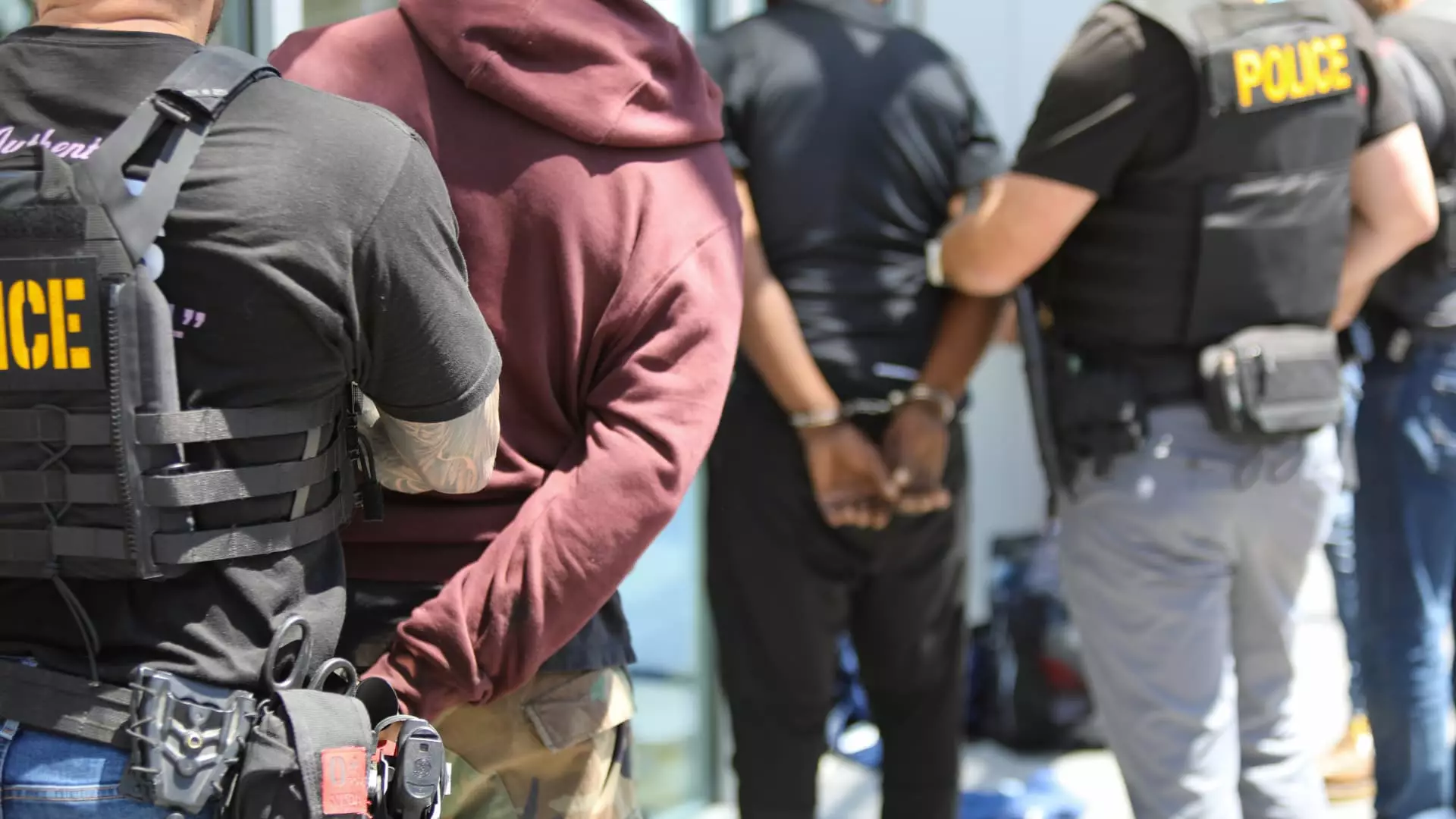Recent events across the United States have made it painfully clear that organized retail crime is not just a minor inconvenience for retailers; it represents a significant societal issue that demands urgent action. With a staggering 93% increase in shoplifting incidents reported in 2023 compared to four years prior, it’s evident that we are facing a severe criminal epidemic. The National Retail Federation’s alarming statistics paint a bleak picture: a staggering 90% rise in associated dollar losses reflects a disregard for property rights that needs to be addressed head-on.
Critics often argue that current laws are ineffective given the skyrocketing rates of theft, and they may be onto something. As it stands, many states have thresholds for felony retail theft so high that it practically invites criminals to target stores with impunity, knowing that their chances of facing serious consequences are slim. This permissive environment fosters a culture where theft isn’t merely a crime; it has become a calculated business decision for some individuals, pushing back against the notion of personal responsibility.
The New Coordinated Blitz
The recently launched nationwide coordinated crackdown on retail crime, encompassing 28 states and more than 100 jurisdictions, marks a definitive shift. Illinois’ Cook County organized crime task force led a blitz that resulted in over 1,450 arrests—an impressive feat that indicates a renewed focus on this growing issue. Sheriff Tom Dart’s comments that specific attention to crime “reverberates” is an astute observation and underlines the importance of maintaining pressure on criminal enterprises.
When law enforcement makes a concerted effort to combat organized theft, there is an immediate psychological impact that can deter would-be criminals. However, this effort must not be short-lived. A one-day operation might generate buzz, but lasting change will require sustained intervention, comprehensive strategies, and possibly, legislative reform to adapt to the current landscape of retail theft.
Legislative Backdrop and its Challenges
One of the most crucial elements to this discussion is the legal framework surrounding organized retail crime. Cook County State’s Attorney Eileen O’Neill Burke has taken a proactive stance since her appointment, pushing for felony charges against retail thieves under circumstances that reflect the severity of their actions. Her approach—lowering the threshold for felony charges from $1,000 to $300 for first-time offenders—has the potential to realign the system to promote accountability and deter habitual offenders.
This shift in the legal paradigm is worthy of commendation, yet it poses questions about the implications for systemic inequities. There are concerns that low-income individuals may be disproportionately impacted under stricter enforcement, yet it’s also undeniable that many of these acts of theft stem from organized criminal networks rather than individual desperation. Thus, law enforcement and judiciary systems have a dual responsibility: to protect businesses while ensuring justice for those genuinely in need.
Collaboration is Key
A remarkable aspect of the recent crackdown was the collaboration between various retailers, law enforcement agencies, and prosecutorial teams. Companies like Ulta Beauty and Walgreens have demonstrated that they are willing to partner with police to share critical information about theft incidents, aiming for a more comprehensive approach to eradicating retail crime. This novel alliance hints at a potential blueprint for how different sectors can work together to tackle problems that, in the past, may have seemed insurmountable.
As evidenced by this operation, when retailers actively participate in intelligence-sharing initiatives, the broader implications for community safety and commerce are profound. The elimination of siloed efforts can deliver impactful results, as each stakeholder involved realizes their role in a collaborative fight against crime. If this trend of cooperation continues, we may finally see a reduction in the upward trajectory of retail theft.
Moving Forward: The Challenge of Sustained Reform
The recent operation and the ensuing arrests are indeed a promising step in addressing organized retail crime. However, it is vital that this momentum translates into sustained reform and policy adjustments. The problems of today will only evolve; therefore, law enforcement and lawmakers must remain ahead of the curve, adapting to new tactics employed by criminals and remaining resolute in disincentivizing theft.
The public’s perception plays a crucial role in this equation. If citizens see that there are consequences for theft and that their communities are protected, it will foster a sense of collective responsibility and lawfulness. Conversely, if actions against theft are perceived as fleeting, it could lay the groundwork for an increase in crime, as aspiring thieves may feel emboldened to exploit any lapses in enforcement.
As we forge ahead, tackling retail crime must be a bipartisan effort, spanning across different societal layers to ensure that accountability and justice are paramount. The time for passive observation has passed; we are at a critical juncture that calls for resolute action and commitment to meaningful change.


Leave a Reply